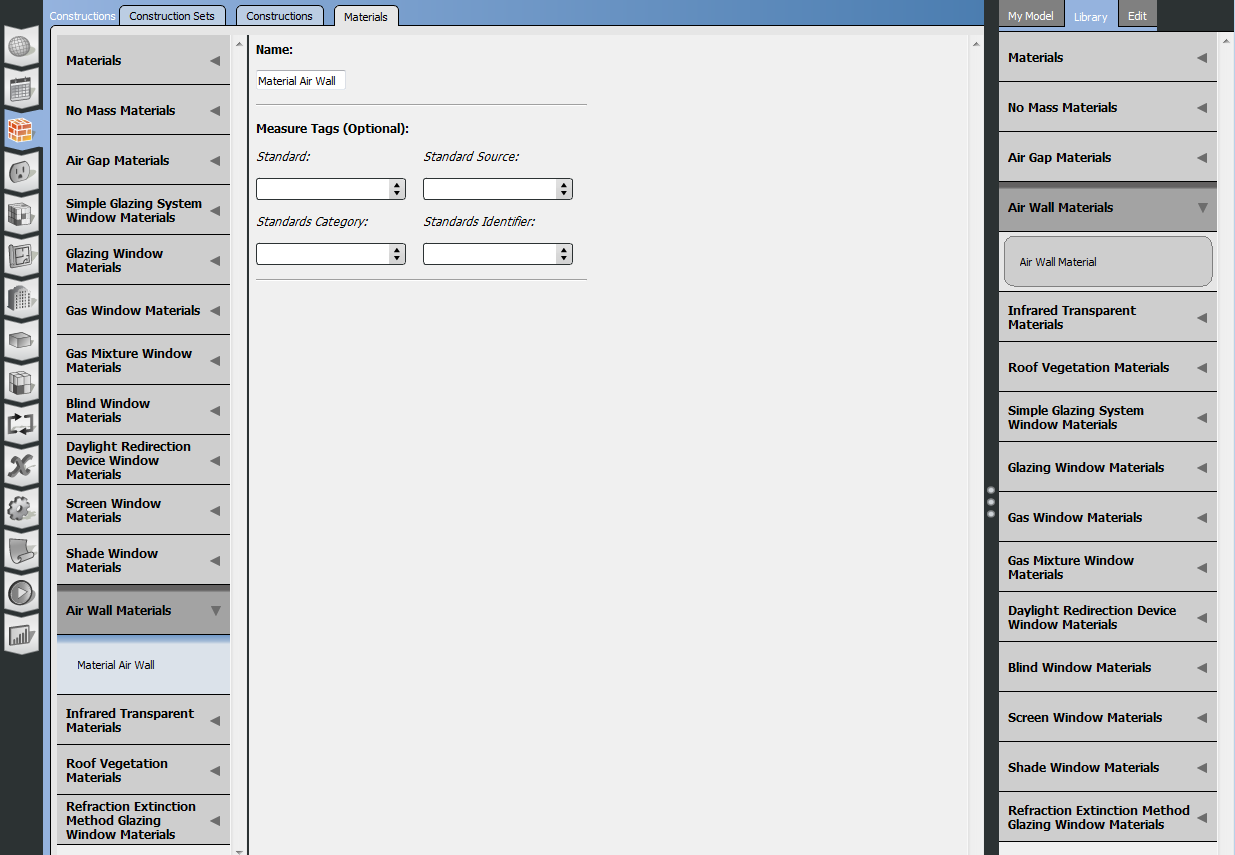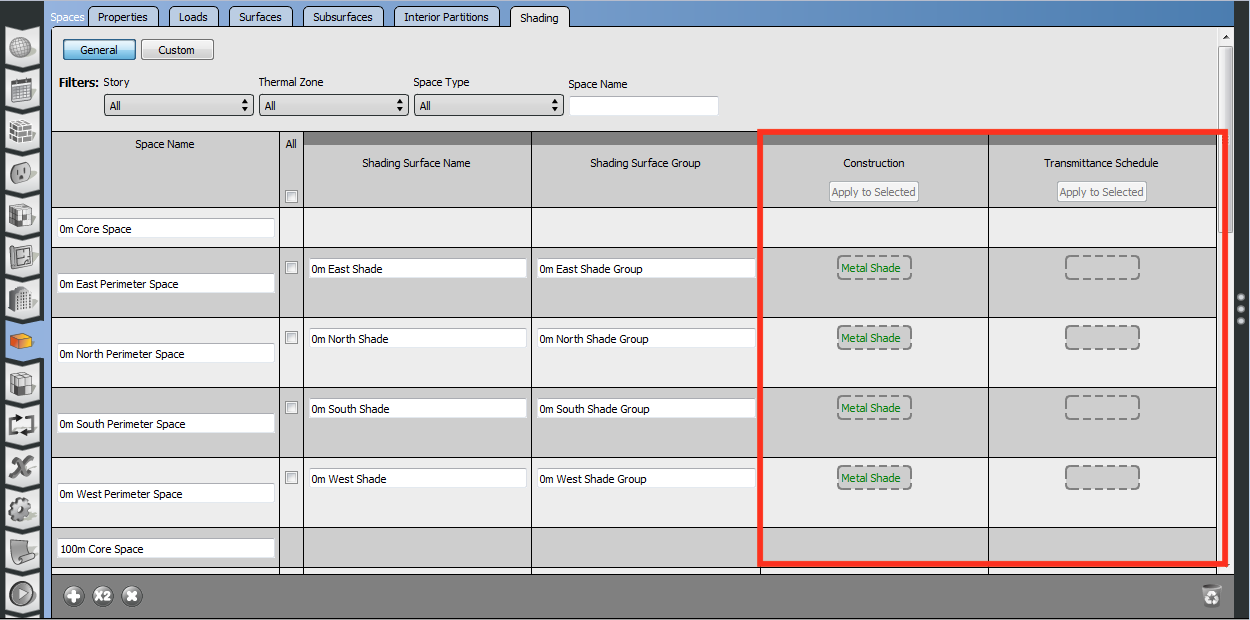First time here? Check out the Help page!
 | 1 | initial version |
Instead of creating a space and zone for the open terrace, I would recommend using the outside face surface temperature output variable of the roof surface to analyze the impact of the textile shade above the open terrace. If you did want to know the space temperature for the open terrace, I would recommend that you model each "air wall" in contact with outdoor air as a wall with 99.99% of its area as a poor window. There are a few reasons for this:
The Air Wall Material in OpenStudio (screenshot below) is actually modeled as an opaque layer for energy analysis in EnergyPlus. This is used as a flag for surfaces that should be transparent when OpenStudio is used for daylighting analysis with Radiance.

The new air boundary construction feature of EnergyPlus v9.2 (available in OpenStudio v2.9) is only meant to be used for interior surfaces separating zones. You'll actually get a severe error stopping the simulation if you try to assign this to a surface touching outdoor air.
To account for the textile aspect of the shading surface, you should define a Material layer that matches the specific heat, density, and other heat transfer properties of the textile, and also define a Schedule that sets the transmittance value for light/radiation passing through the textile. Assign the material layer to a Construction, then assign the construction and schedule to the shading surface in the Shading sub-tab of the Spaces model data tab. This model data tab is near the middle of the left edge of OpenStudio (see below).

You can refer to this post for more information about assigning transmittance schedules to shading surfaces.
